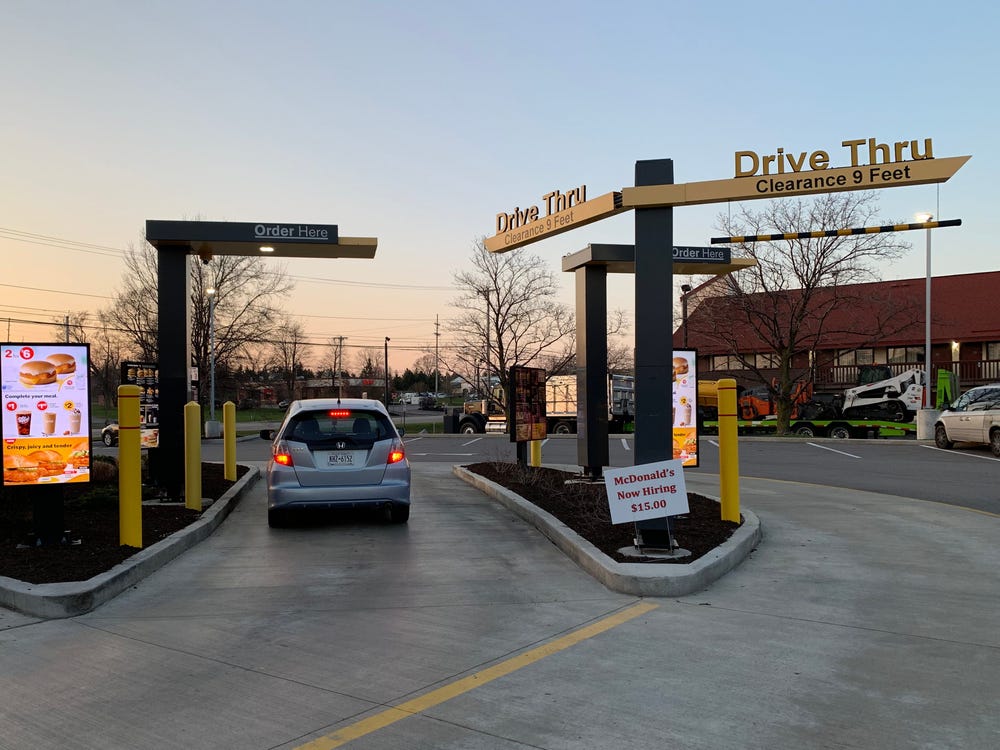
With millions of former service workers not returning to the job market, some choosing to retire, others blaming Covid-19, ETC., industries including restaurants are having an increasingly tough time staying staffed — according to the National Restaurant Association.
Three out of every four restaurant owners can’t retain enough servers — but demand for in-person dining is returning. What are restaurateurs supposed to do? How about hiring robots running on artificial intelligence (AI)?
Small up to national restaurant chains can now fill their openings via the huge advancements in robotics and software created specifically for their industry.
McDonald’s just announced it will partner with IBM to automate drive-thrus, and the results could potentially allow the fast-food giant to operate with far fewer workers.

McDonald’s acquired Apprente’s AI technology to provide “faster, simpler and more accurate order taking” at drive-thrus.
They tested the AI technology in 10 Chicago restaurants this summer, to some success. The test restaurants reported that the AI had an 85% accuracy in recognizing orders using voice recognition software, and employees had to step in around once in every five orders.
The Cuban restaurant Sergio’s in Miami, Florida, decided to hire a robot named Servi, created by a Silicon Valley company Bear Robotics. Servi, delivers food and busses tables. Each unit is leased by Sergio’s for around $999 a month — or about $2 to $3 an hour including installation and support.
Fippy, a burger-flipping robot from Miso Robotics, launched in 2018 at Pasadena-based burger chain CaliBurger, but was let go after only one day for flipping burgers too quickly.
After returning from the engineering table, Miso just unveiled Flippy 2, a more independent version of the kitchen robot, poised to officially join the food industry workforce later this year.
“The fry station is one of those jobs, it’s tough to do,” said Mike Bell, Miso Robotics CEO. “It’s monotonous, sometimes it’s dangerous, and it’s pretty repetitive. So it was a perfect opportunity for automation robotics to step in and help brands like Buffalo Wild Wings.”
The robot can cost up to $3,000 a month but with the skyrocketing labor rates, especially in states with a high minimum wage, the hourly rate for these units is considerably less. Miso expects to participate in a dozen pilots with top restaurant chains in the next few months.
Jim Collins, President of Perfect Company, a leading provider of technology solutions for the restaurant and hospitality industries is optimistic about the new technology.
“I think the big difference in 2022 is that we’ll likely see actual production deployment of specific devices, such as French fry or pizza robots,”
“Adding robots isn’t just about streamlining the cooking process. “It can actually free the kitchen team to focus more on creativity and innovation,” said Collins. “There are benefits to technology that go beyond quality and consistency.”
I for one still want to order to a real human being, but I am sure as in other areas in which AI and robotics are advancing rapidly, I too will be ordering my food through a table kiosk or ET in the near future.
Written By: Eric Thompson, host of the Eric Thompson Show. Follow Eric on his website ETTALKSHOW, and social media platforms, MAGABOOK, Twellit & Twitter.
This story syndicated with permission from Eric Thompson – Trending Politics
"*" indicates required fields

